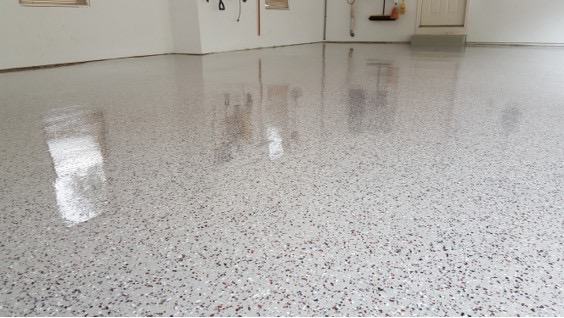Polyaspartic vs Epoxy flooring are both very popular choices for industrial and commercial flooring applications. They are both durable, long-lasting, and easy to maintain. However, some specific differences between the two that may make one a better choice than the other for your specific needs. In this article, we will explore the differences between Polyaspartic vs Epoxy flooring.
Epoxy Flooring:
Epoxy flooring is a resin-based coating that is made of two parts, resin, and hardener. When combined, they create a hard, durable surface that is resistant to chemicals, stains, and moisture. Epoxy flooring is popular in industrial and commercial settings because of its durability and low maintenance requirements. Epoxy flooring can be customized with different colors and designs, making it a versatile option for a variety of applications.
Polyaspartic Flooring:
Polyaspartic flooring is a newer type of coating that is similar to epoxy but has some distinct differences. Polyaspartic coatings are made of a different type of resin that cures more quickly than epoxy. This makes polyaspartic coatings ideal for applications where fast installation and turnaround times are required. Polyaspartic coatings are also UV resistant, which means they are less likely to yellow or fade over time.
Differences between Polyaspartic and Epoxy Flooring:
Cure Time:
One of the most significant differences between epoxy and polyaspartic flooring is cure time. Polyaspartic coatings cure faster than epoxy, which means they can be installed and ready for use in as little as one day. Epoxy, on the other hand, typically takes several days to cure fully. A quick return to service can be an easy decision when downtime is measured financially.
UV Resistance:
Polyaspartic coatings are more resistant to UV light than epoxy. This means polyaspartic coatings are less likely to yellow or fade over time, making them an excellent choice for applications where aesthetics are important and sun exposure is present.
Durability:
Both epoxy and polyaspartic coatings are durable and long-lasting, but epoxy is generally considered to be slightly more durable than polyaspartic. Epoxy is thicker and harder than polyaspartic, which means it can withstand heavier foot traffic and machinery.
Cost:
Polyaspartic coatings are generally more expensive than epoxy. This is because they require more specialized equipment and installation techniques, and they cure faster, which means the installer has less time to work with the product.
Both epoxy and polyaspartic coatings are excellent choices for industrial and commercial flooring applications. However, the choice between the two will depend on your specific needs. If you require fast installation times and UV resistance, polyaspartic may be the better choice. If you need maximum durability and a more cost-effective option, epoxy may be the better choice. Consider your specific needs and consult with a Painting Technologies professional today to determine which option is best for you.

